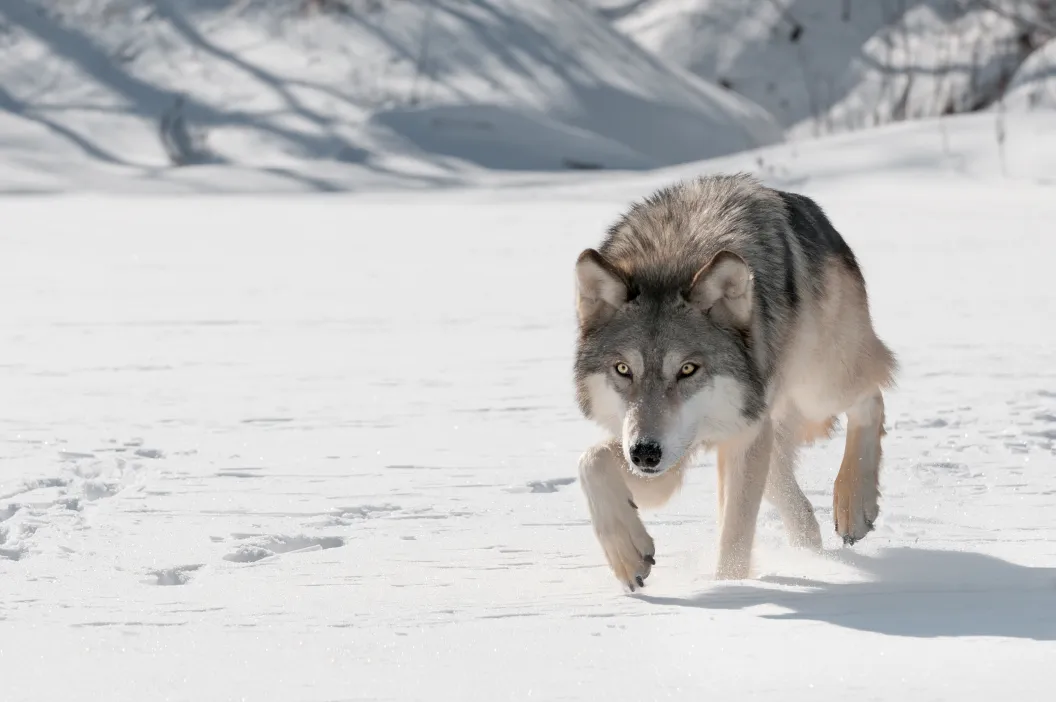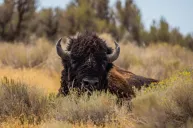Regardless if you live in North America, Europe, or Asia, the wolf is one of the most controversial species of animals around. Many people admire the members of the Canis lupus family for their beauty, their social nature, and their wildness. Others, chiefly hunters and farmers, despise them for how they prey on big game animals like deer, elk, and other ungulates, as well as livestock. In fact, an aggressive period of hunting, trapping, and loss of habitat put the gray wolf on the endangered species list for nearly half a century.
Through subsequent conservation efforts in Canada, Mexico, and the United States, wolf populations are making a comeback. But while wolf habitat is expanding in North America, it's still rare to encounter a wolf in the wild. All the imagining in the world may not prepare you for what one of these carnivores actually looks like, or how big wolves are in the wild.
How Big Are Wolves?
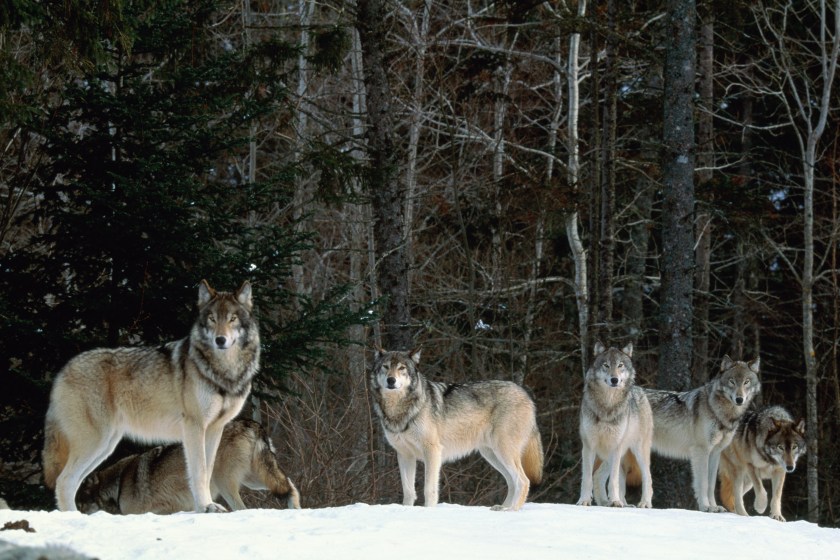
Getty Images, Art Wolfe
So, how big are wolves in general? Well, it depends on the type of wolf. Wolf sizes vary greatly from subspecies to subspecies, with the smallest wolf, the Arabian wolf, weighing about 45 pounds and the largest, the gray wolf, growing up to 150 pounds. They also vary by sex, with female wolves typically being smaller than male wolves.
The biggest wolf ever recorded was one caught in remote Alaska in 1939 by famous Alaskan trapper Frank Glaser-a massive gray wolf that weighed in at 175 pounds. Wolves that size are incredibly rare, and most accounts of them are from the early 20th century, before they were decimated across North America by hunters and habitat loss.
Because there is so much variety in the sizes of wolves, we'll break wolf sizes down by subspecies. But first things first. There have been a lot of arguments on what the actual subspecies of wolves are, and it seems the subspecies are constantly being shuffled around. Recent studies by wildlife biologists suggest that there are only three distinct subspecies of wolves in North America: the gray wolf, the red wolf, and the eastern wolf. But for conventional completeness of all canid species, we included a few others in our list.
The Biggest Wolf: The Gray Wolf
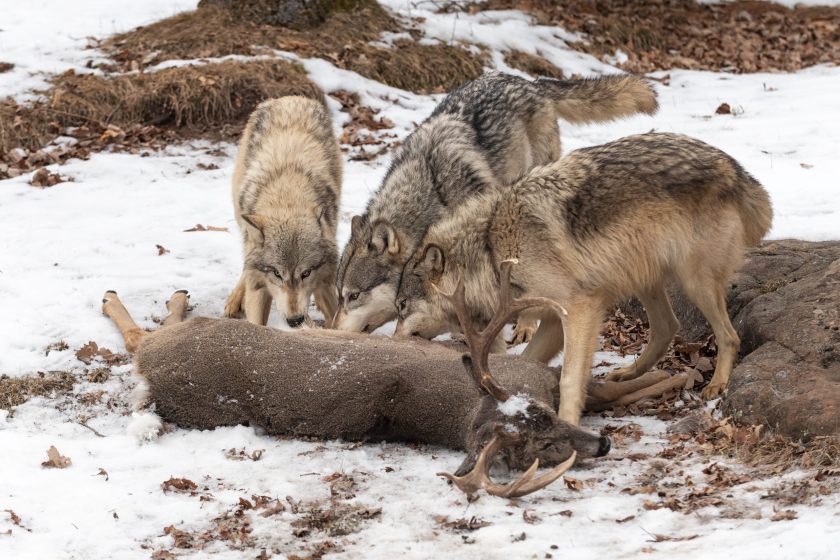
So, what's the largest species of wolf? The gray wolf takes that title home.
Gray wolves, also known as the grey wolf, the Mackenzie Valley wolf, the Rocky Mountain wolf, the Northwestern wolf (Canis lupus occidentalis), and the timber wolf, are the animal most people think of when they envision wolves. These animals grow to a massive size; not only are gray wolves the largest wolf, they're also the largest member of the entire canidae or dog family.
Adult gray wolves can vary in size, based on geographic region. They can stretch from 4 to 6 feet long and weigh anywhere from 40 to 175 pounds. Gray wolves over the 100-pound mark are rare, but it's possible to see one that size if you're in the right area.
On average, the Northern Rocky Mountain wolf (Canis lupus irremotus) weighs between 70 and 150 pounds. As the name suggests, you'll find this species most often in regions of the Rocky Mountains, especially Idaho, Wyoming, and Montana.
The Mackenzie Valley Wolf, also called the Northwestern wolf, the Alaskan timber wolf, or the Canadian timber wolf, is found mainly in Canada, Alaska, and some western parts of the continental U.S. They can grow to over 100 pounds and stretch 5 to 6 feet long.
Historically, gray wolves ranged across North America, Asia, and Europe. Decades of hunting and habitat loss have shrunk their range, and they are considered endangered in much of North America. While their range is smaller now, it's still possible to see massive gray wolves in places like Alaska and northern Canada, and in Yellowstone National Park, where they were reintroduced in 1995.
What It's Like to See a Gray Wolf in Person
Several years ago, I was lucky enough to see one of these monstrous wolves while exploring Yellowstone National Park in late September. I had stopped at a pulloff in Hayden Valley, where a local photographer familiar with the area was keeping watch. He'd spotted a large female gray wolf in the brush just a few hundred yards away.
We waited together for a few minutes when, suddenly, she stepped out of the brush. I had seen wild wolves in Yellowstone several times before this, but this alpha female was by far the largest wolf I had ever seen, weighing at least 100 pounds and nothing but pure muscle. Even from 200 yards out, I could see her large canine teeth as she went about her day, oblivious to the crowds of onlookers.
When you see an animal that size in person, it's easier to understand why so many people harbor such a fear of these animals. The massive alpha female was pretty intimidating all on her own without any of her other pack members present. When wolf packs have several animals of this size all ganging up on an elk or bison, it's clear why gray wolves have a reputation for being such fearsome predators.
It's worth noting that despite the gray wolf's intimidating size and portrayal in movies and folklore, recorded attacks on humans are very rare. Despite being home to some of the largest gray wolves in North America, there hasn't been a wolf attack in Yellowstone since the animals were reintroduced there.
The Eastern Wolf
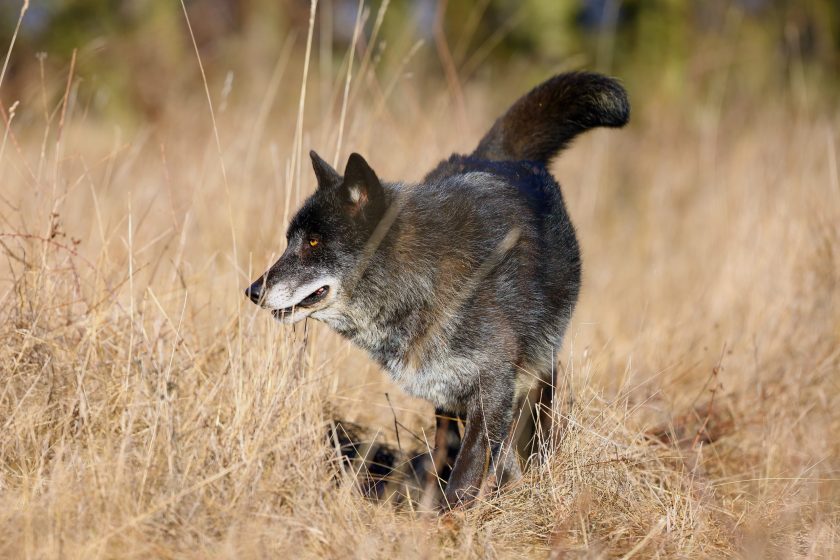
The eastern wolf, a.k.a. Canis lupus lycaon, is also sometimes called the eastern timber wolf. You can find the eastern wolf in the American Great Lakes regions of Minnesota, Michigan, and Wisconsin, as well as in Quebec and Ontario in Canada.
Eastern wolves are much smaller than gray wolves and max out at around 75 pounds. They stand about 30 to 32 inches high at the shoulder and are about the same size as a large golden retriever.
Like many wolves, eastern wolves were once far more widespread than they are now. After hunting and habitat loss killed many of them, eastern wolves were only found in northeastern Minnesota and Isle Royale National Park. Once they were protected under the Endangered Species Act, their numbers began increasing. However, despite living in Michigan my whole life, I've never seen one while exploring the state's rugged and vast Upper Peninsula.
The Red Wolf
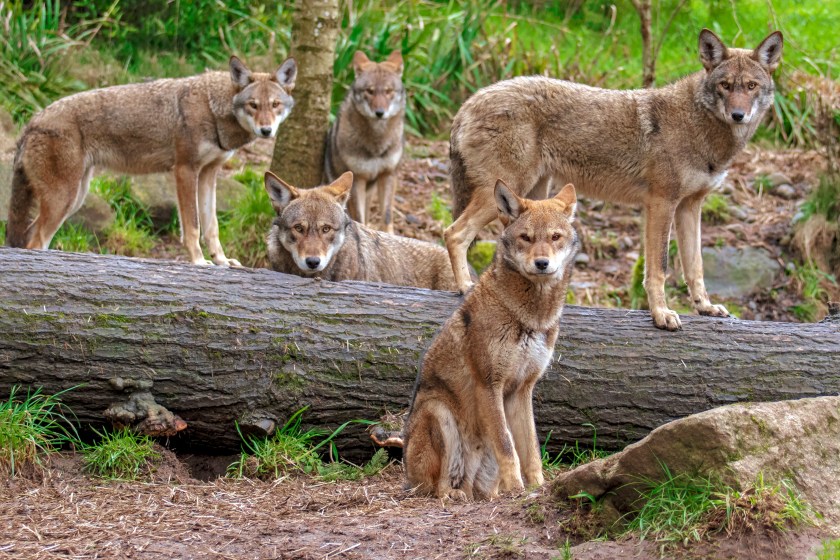
Getty Images, karen crewe
This subspecies redo wolf (Canis lupus rufus) is protected under the Endangered Species Act and, as the name suggests, often has a reddish hue to its coloration. It has a limited range, mainly in the southeastern United States in the Carolinas and Texas. They can also be found across parts of Pennsylvania. There have been concentrated efforts to try to restore this animal to its home ranges, but they are still a rare sight anywhere in the wild.
This species is generally smaller than other wolf species. Red wolves measure around 4 feet long and stand about 25 inches at the shoulder, and range from 40 to 80 pounds.
Arctic Wolves
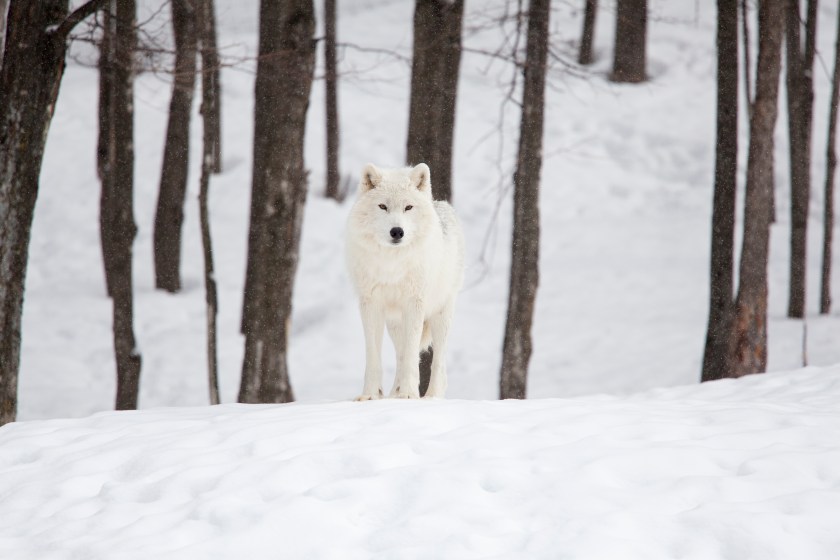
Getty Images, aleroy4
Arctic wolves have, in the past, been their own subspecies of wolves, though they are now lumped under gray wolves. We're keeping them separate because they live in such different areas from most of the gray wolves in North America. As the name suggests, arctic wolves live in the extreme northern climates of the Arctic Circle in Alaska, Canada, and parts of Greenland. The remote areas these wolves live in have been a benefit to their survival, and they haven't been as extensively hunted as other wolf species nor have their habitats been as encroached upon by humans.
Arctic wolves, as a type of gray wolf, can be massive. In the case of some alpha males, the largest specimens can reach upwards of 160 pounds and 5 to 6 feet in length.
The arctic wolf hunts in packs and feeds mostly on caribou and muskox, and round out their diets with smaller game, like arctic hares.
Mexican Wolf

Getty Images, stevegeer
The Mexican wolf is another gray wolf subspecies in North America and is highly endangered. Only a few hundred Mexican wolves still exist in the wild. Captive breeding programs have helped, but this species has a long way to go to prevent extinction.
Their current range includes a small Arizona and New Mexico border area and the Sierra Madre Occidental Mountains in Mexico. Mexican wolves' tendency to prey upon domestic livestock led to widespread depopulation efforts in the early 20th century. As a result, Mexican wolves no longer inhabit some of their historical ranges, including more of Arizona and even parts of Texas. According to the Center for Biological Diversity, these wolves prefer mountain and desert ecosystems.
Usually, Mexican wolves reach weights between 50 and 80 pounds.
Eurasian Wolf
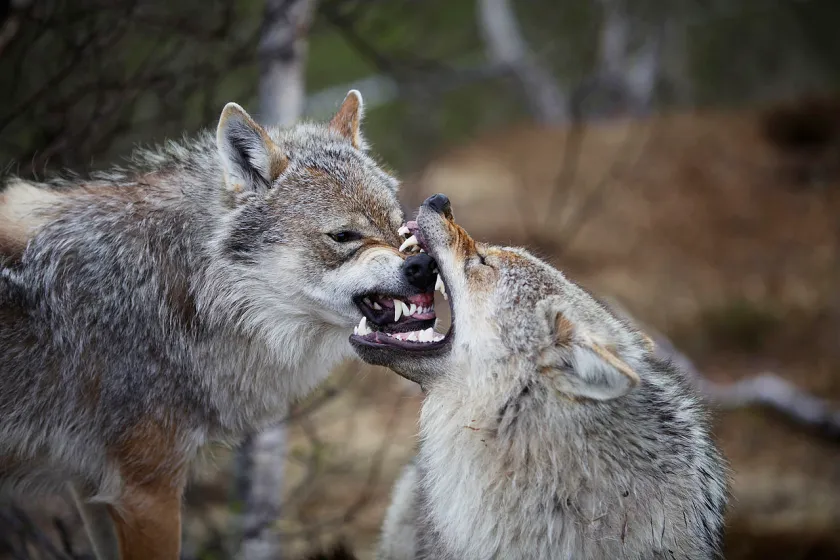
Wikipedia Commons, Landskonferansen
The Eurasian wolf, another subspecies of gray wolf known as Canis lupus lupus, is native to Eurasia, Europe, and Russia. This species eats mostly deer, moose, and even caribou in some more remote regions of Russia. While the Eurasian wolf only stands around 30 inches high at the shoulder, they're 5 to 6 feet long and weigh around 75 pounds.
The Eurasian wolf is a resilient one. Europeans hunted them heavily, and they succeeded in exterminating the wolf from most areas of the continent by the mid-1800s. The Soviet Union tried to do the same, but numbers have recovered somewhat, probably thanks to Russia's vast wilderness, which gave the animals more sanctuary and a place to raise young wolf pups away from people.
This species of wolf has a more notorious reputation than the gray wolves of North America because it has supposedly been responsible for thousands of deaths from medieval times to the present. It may be argued that most of the bad reputations for wolves come from this species' attacks on humans.
How Big is a Wolf Compared to a Dog?
Most wolves, regardless of subspecies, fall between the 50- to 80-pound range, with some of the largest wolves reaching well above 100 pounds. This makes them comparable to many of the larger domesticated dog breeds, with the largest mastiffs surpassing that.
For a closer visual comparison, a domestic German shepherd usually only weighs 60 to 80 pounds. Gray wolves can weigh well over 100 pounds, and even a red wolf, standing at only 25 inches at shoulder height, is still about the size of a bloodhound. When you add in the fact that wolves typically run in packs, with large alphas out front, their size is incredibly intimidating!
Remember that even domesticated dogs have mauled and killed humans in North America before. Wolves are apex predators perfectly adapted to their wilderness environment. We recommend giving any wolf you encounter in the wild a wide berth for your and the animal's safety.
READ MORE: How Big is a Moose, Really?
